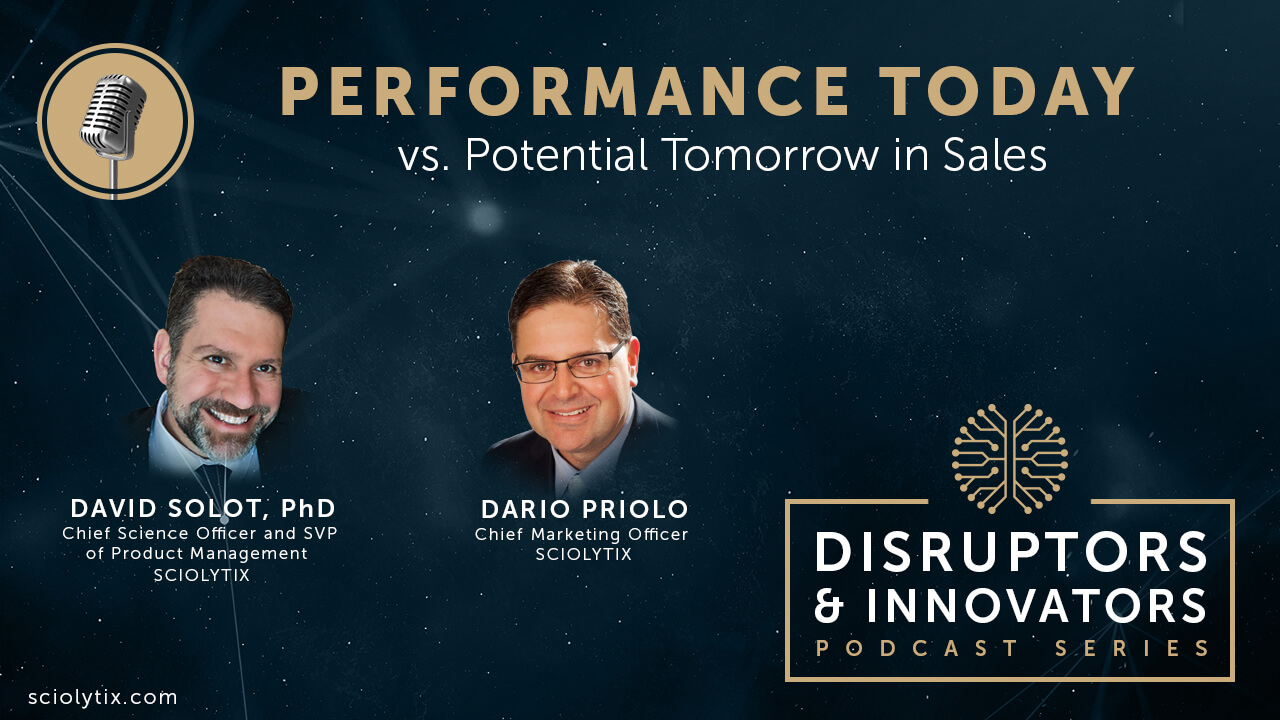
When a sales manager evaluates a candidate, they’re trying to predict that candidate’s sales performance. In other words, how well this person can use their personality traits, behaviors, cognitive ability, and learned skills to sell in the real world.
Will this person hit the goals they have set for them, and what will their performance look like?
However, for 50 years, all of the tools available for predicting sales performance have actually been measuring sales potential. These tools tell you if this person has the right traits, behaviors, cognitive ability, and skills to do the job, but not how well they can bring all of those things together when face to face with a prospect. Essentially, sales hiring tools have been answering the question of “Can this person perform?” by saying “Well, they have some potential.”
When you measure potential, you learn:
- If the candidate is wired the right way to do the job.
- Do they have the right set of traits and behaviors?
- Based on their background, have they learned the right skills for the role?
This is all valuable insight, but it doesn’t answer the question: Can they pull it all together and actually sell?
In a continuation of our conversation on predicting sales performance, we invited David Solot on for another Disruptors & Innovators podcast to zero in on the types of instruments that actually measure and predict performance today vs. potential tomorrow. We also asked the question: “Is it possible for things like personality tests, skills tests, and even role plays to still have a role in today’s hiring process?”
Measuring Performance — “Put me in, Coach!”
For 50 years we’ve been trying to find a way to predict sales performance accurately and objectively. To date, the best we’ve done have been personality and cognitive tests. Here are a few other parts of the hiring process that try to get at a prediction of sales performance:
- Behavior-based interview — You share a specific situation with the candidate and say, “Have you encountered this situation in the past, and how did you handle it?” But it’s not perfect because you’re not giving the same scenario to each and every applicant. It’s a good approach, but far too many candidates are prepared to game this method.
- Reference checks — The problem with reference checking is it used to be an OK tool, but because of legal issues these days, the previous employer is only really confirming that the candidate used to work there and left on good terms. That’s all you find out. You would have no idea if they were good at what they did.
- Ride-alongs (shadowing) — It’s not very practical to shadow a candidate in the field, but it can be done. But how much time and money would you have to invest in shadowing more than a fraction of your candidates? And would you be willing to put a candidate in front of one of your real clients?
- Role plays — While a good way to see how a sales candidate will perform, it’s incredibly time consuming. Are you really going to summon your entire staff together to listen to five or six candidate role plays? That’s a lot of time to invest in the interview process. Plus, it’s hard to get an apples-to-apples comparison since the reactions of your staff can be swayed by unconscious biases.
All of these are great stand-ins for measuring performance, but we can now predict performance in ways we were never able to do in the past through virtual simulations.
Predictive Simulation: Predicting Performance, Not Just Potential
In our new virtual simulation environment, salespeople interact with computer-controlled avatars, and navigate several realistic sales situations. These include prospecting, negotiating, gaining buy-in, and even helping a peer prep for a call. The program is intuitive, and the avatars respond naturally to your salesperson in a simulated conversation. With predictive simulations, we can predict how effective a salesperson will be based on their performance in these situations. So just like a pilot might need to prove their skills flight simulator before taking a solo flight, salespeople can prove how well they can sell and hit their quotas based solely on their ability to function and do well in the simulated sales environment.
Predictive simulations improve upon the hiring process in a number of ways.
- Performance is measured directly, instead of looking at a stand-in for performance.
- It’s objective, meaning that it’s the same for every person.
- It reduces bias because the system objectively measures each candidate by the same standards.
- The avatars respond the same way every time, proving an apple-to-apples comparison of each candidate.
- It eliminates concerns over salespeople “gaming the system”, because the only way to do well is to be able to sell.
- Performance in the simulation is tied directly to real-world KPIs.
On the flip side, the candidate sees you as a company that is ahead of the curve:
- They’ll feel like you really “get it.”
- You’re not wasting their time – no mind games.
- They know you’re using something cutting-edge and relevant.
- You’re making hiring decisions based on actual job performance.
Predictive simulations tell you, without any interpretation needed, “Here’s how well this person can perform right now.” Combine the results of simulations with the results from personality and cognitive tests, and you get a full measure of a candidate’s potential and performance. This provides the intelligence you need to hire for today and for tomorrow.
If you’d like to learn more, please contact us at info@sciolytix.com. We are revolutionizing the way organizations hire, onboard, and develop talent. Predictive simulations are the latest enhancement we’re adding to that arsenal of products. And we guarantee you won’t be disappointed.